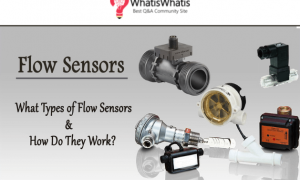Given the road conditions in our country and the absurd price at which gasoline is sold, it is a fact that we are all looking to save as much as possible when driving. It is true that modern cars consume very little fuel, but if you are one of those who still do not drive vehicles with green technologies, here are the ten tips for gas consumptions at all times.
10 Tips For Gas Consumptions
Plan your trip
Believe it or not, a planned trip will allow you to reach your destination in the fastest, easiest and safest way. Therefore, driving will be more efficient and successful, thus saving a lot of fuel.
It must be taken into account that lengthening a 60-minute journey with an extra 10 minutes causes a 14 percent increase in gasoline consumption.
Check the tire pressure
This is one of the simplest points to cover to improve our gas mileage. The tires must be inflated to the pressure indicated by the manufacturer and according to Buy used cars online the weather or load conditions. If we follow the pounds suggested by the brand to the letter, we will definitely have less consumption.
See more: Get to Know how you can Check the Tyre pressure on your own
You should know that driving with a pressure of 0.5 bar lower represents an increase of four percent in fuel consumption.
Eliminate unnecessary loads
Excessive weight translates into increased engine work to move the mass of the vehicle and this, in turn, speaks of an increase in consumption. Not only is it a matter of improving space, driving with 100 kilos of unnecessary weight causes an increase of six percent in a midsize car with a four-cylinder engine.
Starts without stepping on the accelerator
It is clear that a car uses more gasoline when going from static to mobile. This is because the engine has to inject more gasoline for the axles to start rolling.
It is important to start the car without stepping on the accelerator and also, if it is manual, to start moving using the inertia of the first gear. It is also important to drive slowly up to 30 km / h.
Uniform speed
Look for fluidity in the circulation and avoid constantly accelerating and braking. The more uniform the circulation, the less fuel wasted on the engine. Avoid unnecessary changes, to decelerate take your foot off the accelerator and let the car roll to brake with the engine revolutions. Brake smoothly and downshift as late as possible.
Know more: A Device for Control Flow and pressure
Circulating at more than 20 km / h with a gear engaged and without stepping on the accelerator, the expense is zero. On the other hand, at idle, very little is spent, but finally there is expense.
Don’t keep your engine idle
An engine idling for 10 minutes can consume 0.13 l / 100 kilometers, which becomes completely unnecessary. In prolonged stops it is highly recommended that you turn off your engine.
Air conditioner For Gas Consumptions
Use this item only when absolutely necessary. Consumption skyrockets if we keep the air conditioning always on. On the other hand, at high speeds it is very important to keep the windows closed, as an aerodynamic complication is generated if they are opened.
Engine braking – Gas Consumptions
Always drive with a safe distance that allows you to anticipate urban braking or acceleration. It is important that you make the engine revolutions the ones that slow down the car body as much as possible.
Shift gears under 2,000 laps
It is an activity that even becomes fun once you understand it. Optimizes gear shifting as much as possible. Ride for as long as possible at the longest speeds. In the city use fourth or fifth and respect the safety limits.
Take advantage of gravity
The descents allow you to gain speed without stepping on the accelerator. Take advantage of inertia to change gears and on hills, stretch to the maximum before downshifting by pressing the accelerator halfway.






Leave a comment